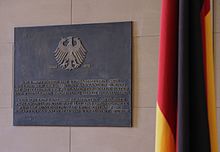
Bonn is a federal city in the German state of North Rhine-Westphalia, located on the banks of the Rhine. It has a population of over 300,000. About 24 km (15 mi) south-southeast of Cologne, Bonn is in the southernmost part of the Rhine-Ruhr region, Germany's largest metropolitan area and the second biggest metropolitan region by GDP in the European Union, with over 11 million inhabitants. It is a university city, was the birthplace of Ludwig van Beethoven and was the capital of West Germany from 1949 to 1990. Bonn was the seat of government of reunited Germany from 1990 to 1999.

The University of Bonn, officially the Rhenish Friedrich Wilhelm University of Bonn, is a public research university located in Bonn, North Rhine-Westphalia, Germany. It was founded in its present form as the Rhein-Universität on 18 October 1818 by Frederick William III, as the linear successor of the Kurkölnische Akademie Bonn which was founded in 1777. The University of Bonn offers many undergraduate and graduate programs in a range of subjects and has 544 professors. The University of Bonn is a member of the German U15 association of major research-intensive universities in Germany and has the title of "University of Excellence" under the German Universities Excellence Initiative.
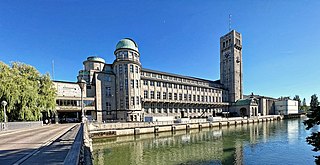
The Deutsches Museum in Munich, Germany, is the world's largest museum of science and technology, with about 125,000 exhibited objects from 50 fields of science and technology. It receives about 1.5 million visitors per year.

Christian Ludwig Brehm was a German pastor and ornithologist. He was the father of the zoologist Alfred Brehm.

Alexander Ferdinand Koenig was a German naturalist and zoologist. Making use of the family wealth earned from the sugar business, he went on collection expeditions and founded what is now known as the Museum Koenig in Bonn in 1912.
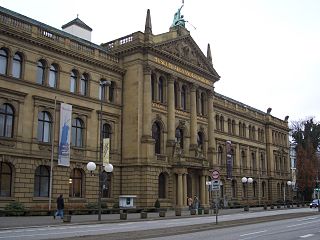
The Parlamentarischer Rat was the West German constituent assembly in Bonn that drafted and adopted the constitution of West Germany, the Basic Law for the Federal Republic of Germany, promulgated on 23 May 1949.
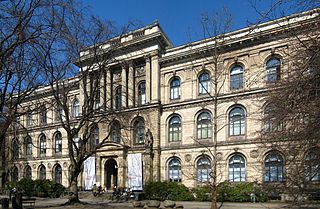
The Natural History Museum is a natural history museum located in Berlin, Germany. It exhibits a vast range of specimens from various segments of natural history and in such domain it is one of three major museums in Germany alongside Naturmuseum Senckenberg in Frankfurt and Museum Koenig in Bonn.
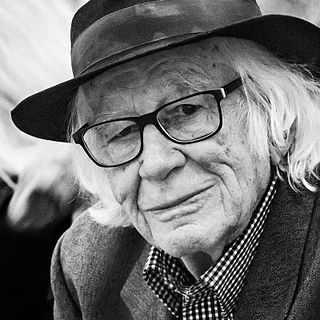
Fritz Koenig was one of the most important international German sculptors of the 20th century.

Hammerschmidt Villa is a villa in the German city of Bonn that served as the primary official seat and primary official residence of the president of the Federal Republic of Germany from 1950 until 1994. President Richard von Weizsäcker made Bellevue Palace in Berlin his primary official seat and residence in 1994. In German, the Villa is also called the "White House of Bonn", and served as a political symbol of West Germany and its capital Bonn. Since 1994, the Hammerschmidt Villa has been the secondary official seat and secondary official residence of the president of Germany. The president's standard is flown above Hammerschmidt Villa when the president is in Bonn.

The German Historical Museum, known by the acronym DHM, is a museum in Berlin, Germany devoted to German history. It describes itself as a place of "enlightenment and understanding of the shared history of Germans and Europeans". It is often viewed as one of the most important museums in Berlin and is one of the most frequented. The museum is located in the 17th century Zeughaus (armory) on the Unter den Linden, just across the Spree from Museum Island. The museum's attached Exhibition Hall was designed by I. M. Pei in the late 20th century. The Zeughaus is closed for renovation, while the Exhibition Hall remains open.

The National Museum of Ireland – Natural History, sometimes called the Dead Zoo, a branch of the National Museum of Ireland, is housed on Merrion Street in Dublin, Ireland. The museum was built in 1856 for parts of the collection of the Royal Dublin Society and the building and collection were later passed to the State.

The Hungarian Natural History Museum in Budapest, dating back to 1802, houses the largest natural history collections of Hungary and the region.

The Museum of Natural History in Görlitz, Germany is a natural history museum with focus on zoology, botany and geology. Since 2009, the museum has been part of the Senckenberg Gesellschaft für Naturforschung with headquarters in Frankfurt/Main. The main field of research is soil biology. In the years 2006 to 2017 the number of visitors was between 25,000 and 34,000, in the year of the 3rd Saxon State Exhibition 2011 it was even 47,000.

The State Museum of Natural History Stuttgart, abbreviated SMNS, is one of the two state of Baden-Württemberg's natural history museums. Together with the State Museum of Natural History Karlsruhe it is one of the most important repositories for state-owned natural history collections.
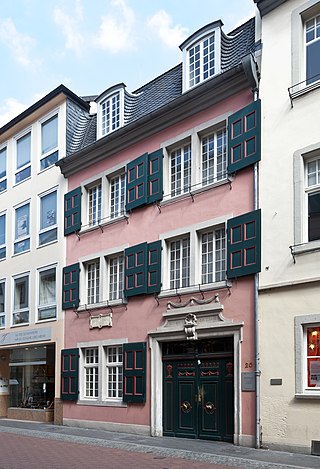
The Beethoven House in Bonn, Germany, is a memorial site, museum, and cultural institution serving various purposes. Founded in 1889 by the Beethoven-Haus association, it studies the life and work of composer Ludwig van Beethoven.

Stavanger Museum is a museum of natural and cultural history established in 1877, located in the Norwegian city Stavanger. The museum's collections consist of several departments: the department of zoology, the department for cultural history.

The Estonian Museum of Natural History is the Estonian national museum for natural history. It is situated in Tallinn's Old Town.
Richard Arthur Hans Kummerlöwe, with the spelling changed to Kumerloeve from 1948 was a German ornithologist who served as an SS Officer during the Second World War. He initially worked as a zoological curator at the Dresden Museum but during the Third Reich he held numerous positions including charge of the Vienna museum after the German annexation of Austria in March 1938. He was involved in the "Nazification" of German and Austrian museums, making them tools for explaining theories of race and genetic purity.
Julius Riemer was a German factory owner, natural history and ethnological collector and museum founder.




